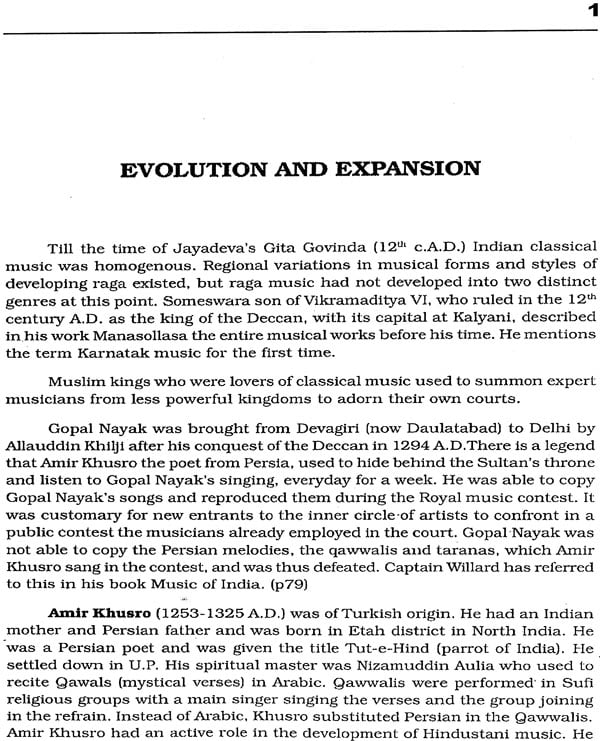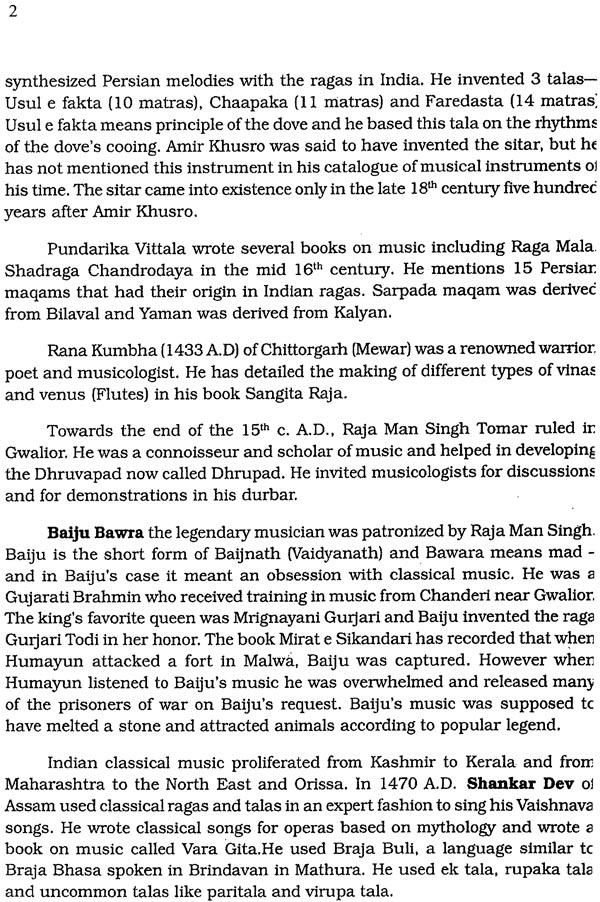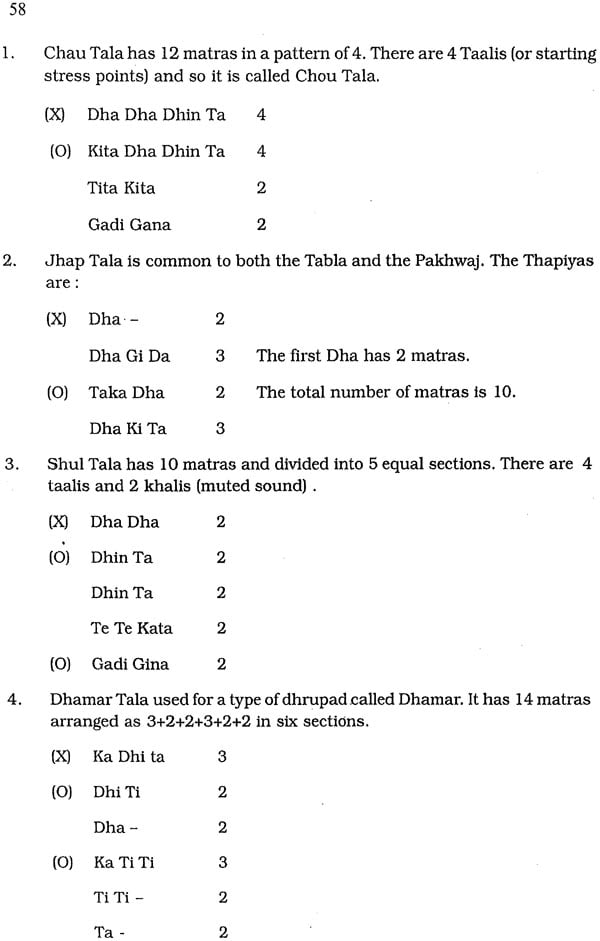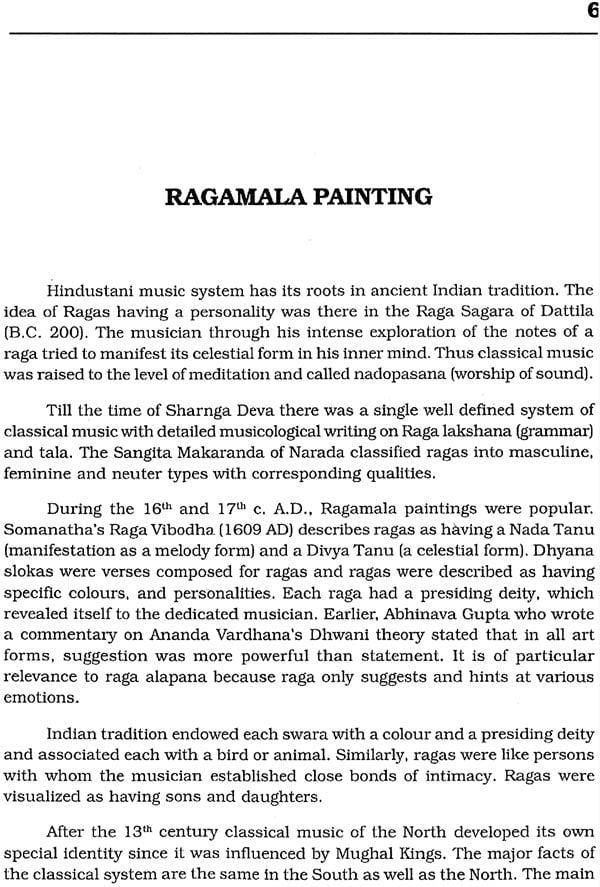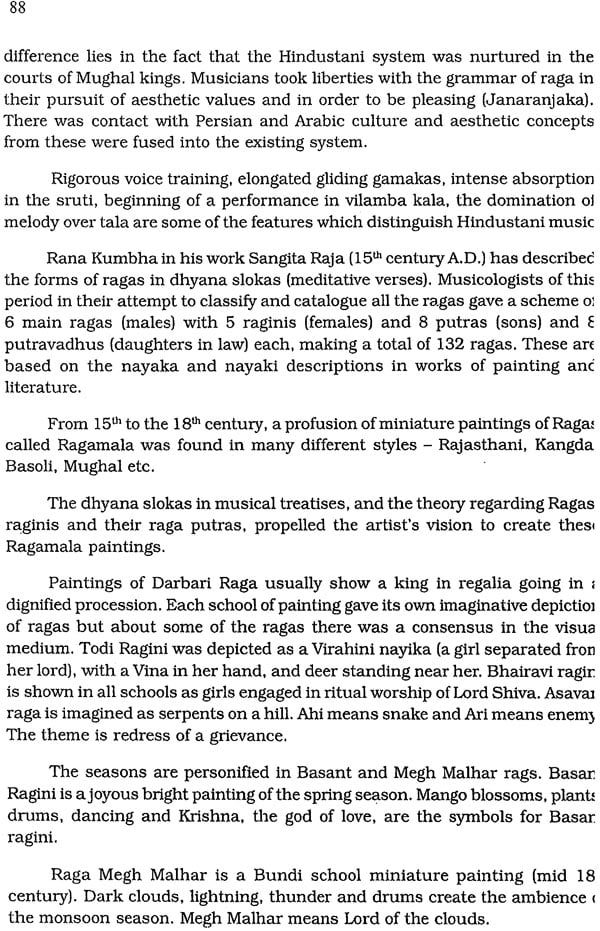
A Treatise on Hindustani Music
Book Specification
| Item Code: | NAP710 |
| Author: | Lalita Ramakrishna |
| Publisher: | Shubhi Publications, Gurgaon |
| Language: | English |
| Edition: | 2017 |
| ISBN: | 9788182904064 |
| Pages: | 116 (8 Color Illustrations) |
| Cover: | Hardcover |
| Other Details | 9.0 inch X 6.0 inch |
| Weight | 340 gm |
Book Description
This book offers a colourful view of the whole spectrum of its genesis and its development till today. In ancient India Samskrit pundits and regional tribals bards nurtured this art. Musicians and musicologist were peripatetic and carried their knowledge all over the country from Kashmir, from Deccan, and from Gwalior to the east, west, north and south.
Ancient Tamizh and Samskrit music scholars had a generous capacity of give and take. This is evident from a study of the Silappadhikaram and the Natya Shastra.
After Jayadeva, the saint poet of the 13th c. A.D. this mighty river of classical music bifurcates into two major streams. They share the same raga, swara and tala heritage but are totally different in the handling of these vital entities.
The Hindustani classical gives a brief idea of the different gharanas (styles) the talas, forms and instruments of this genre. Tansen is the seminal figure that gave the music of his time a durbar look and classical music of great mellifluousness and flow set in the dialects of the people.
This book attempts to give a composite view of Indian classical music in an interesting format by including colourful photos and paintings. It is an outline of the major areas in this art from its prehistoric beginnings to the present day. It contains a little of everything and will hopefully arouse the interest of the reading public for a deeper study.
I am profoundly grateful to the music vidwans who have been generous in giving their photographs for publication.
This book could not have taken shape without the encouragement and help of my husband GVR, who has involved himself in every aspect of this project. My sister, Shakuntala Ramani gave enthusiastic support, which was of great help when the project seemed like an impossible exercise; Shanker’s skill with the camera got me some rare pictures.
Among the older maestros and among the younger group, I have not mentioned many excellent performers, due to lack of time and space.
The following books have been an invaluable help while writing this book:
Indian Music - Thakur Jaideva Singh
Evolution of Raga and Tala - M.R. Gautam
Naad - Sandeep Bagchi
South Indian Music - Prof Sambamurthy
A History of South India - K.A.Nilakanta Sastri
South Indian Classical Music - Ludwig Pesch
The Great Masters - Mohan Nadkarni
Shruti Magazine - All issues
Diacritical marks have been given for many of the words in the Glossary.
Indian classical music is a sophisticated art form that requires a great deal of listening and a patient learning of its mechanics. It has specialized in melody and the subtle nuances of sound.
This book offers a colourful view of the whole spectrum of its genesis and its development till today. In ancient India Samskrit pundits and regional tribal bards nurtured this art. Musicians and musicologists were peripatetic and carried their knowledge all over the country from Kashmir, from Deccan, and from Gwalior to the east, west, north and south.
Ancient Tamizh and Samskrit music scholars had a generous capacity of give and take. This is evident from a study of the Silappadhikaram and the Natya Shastra.
After Jayadeva, the saint poet of the 13thc.A.D this mighty river of classical music bifurcates into two major streams. They share the same raga, swara and tala heritage but are totally different in the handling of these vital entities.
The Hindustani section gives a brief idea of the different gharanas (styles) the tales, forms and instruments of this genre. Tansen is the seminal figure that gave the music of his time a durbar look and classical music became a status symbol of the aristocracy. It was classical music of great mellifluousness and flow set in the dialects of the people.
In the south, three great saint composers, called the Trinity, shaped the features of the Karnatak idiom. A fascination for mathematical calculation led Karnatak musicians to explore complex time divisions in rhythm. Their scientific temperature gave a viable classification theory for the plethora of ragas.
During the latter half of the twentieth century music came out of the mehfils and palaces. It was available to the common man in concerts and on radio and T.V. The unprecedented growth of communication systems in the last two decades has given rise to mixed marriages of various systems in fusion music. The common man and the younger generation are now the patrons of music.
In spite of all modern ramifications the inner core of pure classical raga music is kept alive by the connoisseurs and the teachers. Modern trends do not vitiate the vital and substantial contours nurtured over twenty plus centuries.
Contents
| Preface | vii | |
| Introduction | ix | |
| 1 | Evolution and expansion | 1 |
| 2 | Raga and thaat | 27 |
| 3 | Musical instruments | 41 |
| 4 | Tala and theka | 53 |
| 5 | Musical forms | 65 |
| 6 | Ragamala painting | 87 |
